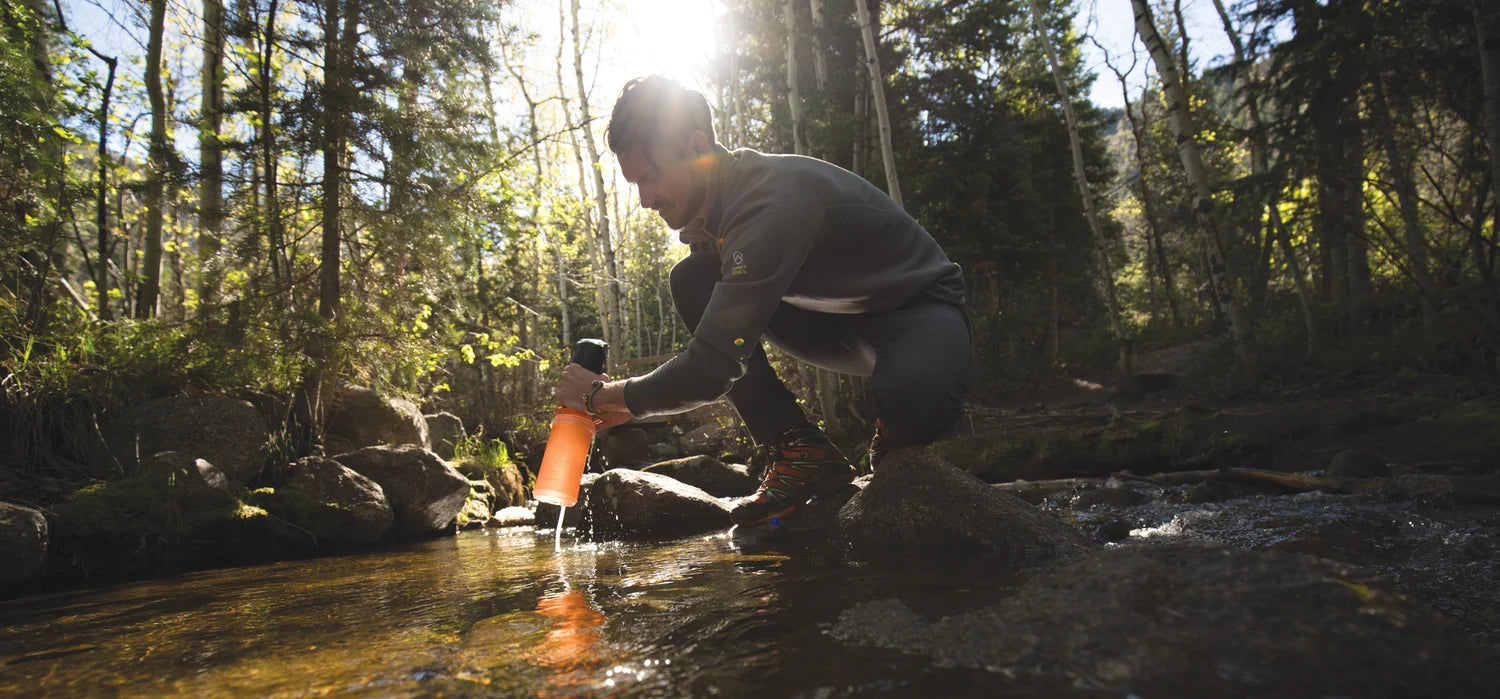If you’re out for a long run in the backcountry, or on a multi-night backpacking trip, sooner or later you may need to replenish your water, most likely from a river or stream. As tempting and pristine as alpine lakes and streams may look, backcountry water sources can contain nasty waterborne bacteria or parasites that could leave you with a bad case of Giardia—thus making your hydration attempts futile, and your body weak. To keep this from happening, collect the water from the cleanest source available—a flowing river rather than a freestanding puddle—and go prepared with a method to purify the water before you drink it down. You have a few backcountry water purification options available:
Boiling water: With a camp stove, bring the water to a full rolling boil for one minute, then allow it too cool before drinking. This is more of an option for multi-day backpacking water purification, however, most backcountry travelers avoid this method as it’s time consuming and requires you to carry extra fuel.
Iodine tablets: Iodine tablets are easy to use, inexpensive, and can be purchased at most outdoor stores or online. They do, however, leave a strange aftertaste that some people find unpleasant, and they take 30-minutes to render water safe to drink.
Katadyn Micropur tablets: Our friends at Katadyn make an iodine tablet alternative. Micropur tablets work in 30 minutes, and they don’t leave a chemical aftertaste.
Water filters: There’s hundreds of backcountry water filtration systems on the market, but we’re partial to Katadyn’s BeFree water filter that’s compatible with our Seeker series bottles. The BeFree is small, lightweight, and allows you to filter as you drink. Ultimately, the type and length of activity, anticipated water sources, and number of people you are filtering for should determine what system you go with.

Drinking straight from streams should be a last resort. When there is an immediate risk of severe dehydration, drinking from streams can save you, as the risk of an infection isn’t going to hit you for a week or two, with the majority of possible infections typically treated with antibiotics. When drinking directly from streams, never drink water that is stagnant and not flowing—always try to find a fast-moving section of the creek or stream where the bacteria is less likely to be congregating in large numbers.
Even if you don’t go the route of iodine or Micropur tablets, a lot of experienced backcountry travelers will carry them with, even on day hikes, to use if they get stuck overnight or if the backcountry water purification systems they are carrying fails. A few paper coffee filters will come in handy to filter out small particles when using purification tablets. Lastly, even using an expensive filter can leave water gathered at a backcountry source tasting a bit “lake-y.” Electrolyte powder or tablets are a great way to cover this up, and supplementing electrolytes is something you should be considering as a part of your hydration plan anyway.

